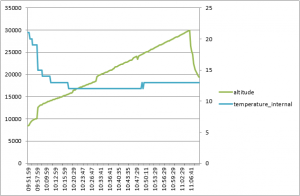The speed of sound crisis
Isaac Newton famously published his major work ‘Philosophiae Naturalis Principia Mathematica’ (often just referred to as ‘Principia’) in 1687. This was the work where Newton described his laws of motion, but he also identified his equation for the speed of sound. This is set out in equation 1 below, where c = wave speed (in this case speed of sound), P = pressure and ρ = density.

There was a problem with this equation. If we substitute atmospheric pressure (101,325 Pa) and density of air (1.225 Kgm-3) then the result of the equation is that the speed of sound is 285 ms-1, which is 60 ms-1 (16%) lower than the accepted value of the speed of sound (340 ms-1). As I blogged here, the true value of the speed of sound was reasonably well known in the late 17th century.
This problem continued for decades. In 1759 Euler said:
“We knew that sound is transmitted through almost 1,100 feet [335ms-1], and no one has yet discovered the cause of this excess over theory”
In 1802, Pierre Simon, Marquis de Laplace (who we know as ‘Laplace’) realised that as sound travels as a longitudinal pressure wave, the molecules compress together and cause an increase in temperature. Because this heat cannot dissipate, the pressure also increases (Laplace was aware of Gay Lussac’s law and later the universal gas law – equation 2). The result is a greater ‘elasticity’ which causes the wave to move faster, thus solving the problem which had persisted for 115 years. Laplace later (in 1826) introduced a factor into Newton’s original equation, termed ‘γ’ which is the ratio of molar specific heats of gas at constant pressure and constant volume respectively.

Equation 4 is the ideal gas law where P = pressure, V = volume, n = number of moles, Ru = universal gas constant and T = temperature. In equation 5 we have re-arranged and replaced the universal gas constant with the specific gas constant. Now, substituting equation 5 into equation 3 which results in equation 6, we can see (from equation 6) the surprising result that the speed of sound is related to temperature (and not pressure). This means that we can expect our speed of sound measurements to track the square root of the absolute temperature as the balloon rises through the troposphere and stratosphere.
References:
https://www.quora.com/What-exactly-is-y-gama-in-Laplace-formula-for-velocity-of-sound-in-air
https://www.thermaxxjackets.com/newton-laplace-equation-sound-velocity/
https://agupubs.onlinelibrary.wiley.com/doi/full/10.1029/2006JD007806

